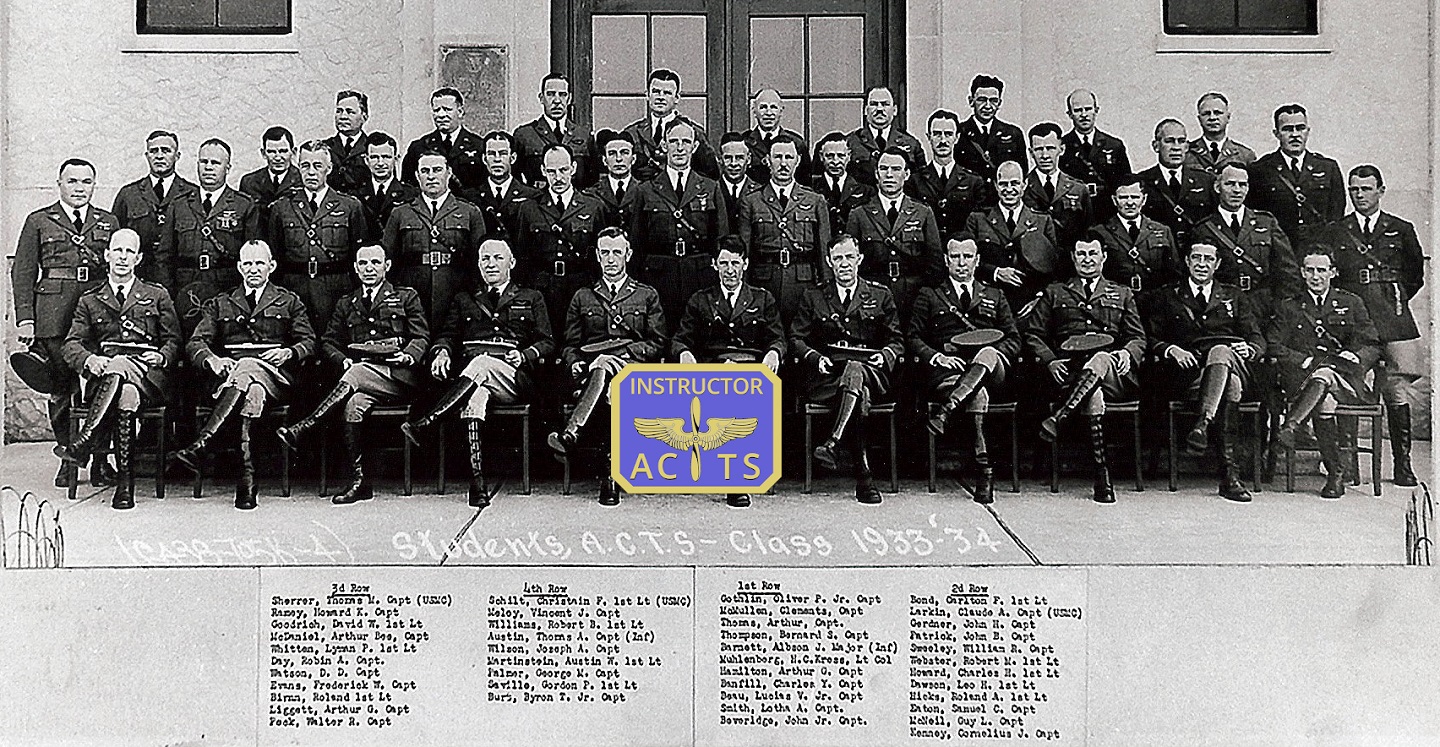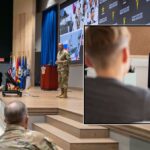
Back in the 1930s, Air Force officers who were assigned instructor duty at the Air Corps Tactical School…would wear these little…pledge pins on their uniforms.
A BETTER PEACE welcomes Dr. John Terino, Chair of the Department of Airpower at the U.S. Air Force Air Command and Staff College (ACSC.) John joins our Editor-In-Chief, Jacqueline Whitt to discuss professional military education (PME) in the Air Force. Stationed at Maxwell AFB, AL which is known as “the intellectual and leadership-development center of the U.S. Air Force,” ACSC is one of the many educational institutions that comprise Air University (AU.) Their conversation covers initiatives and difficulties in manning, accreditation, curriculum and returning prestige to service as faculty and instructors in the greater professional development enterprise. 2020 is the 100th anniversary of the creation of the Air Corps Tactical School (ACTS,) the predecessor to modern PME in the Air Force and more specifically ACSC.
Podcast: Download
Subscribe: Apple Podcasts | Spotify | Amazon Music | Android | Pandora | iHeartRadio | Blubrry | Podchaser | Podcast Index | TuneIn | Deezer | Youtube Music | RSS | Subscribe to A Better Peace: The War Room Podcast
John Terino is a professor of Comparative Military Strategy and the Chair of the Department of Airpower at the Air Command and Staff College. Jacqueline E. Whitt is an Associate Professor of Strategy at the U.S. Army War College and the Editor-in-Chief of WAR ROOM. The views expressed in this presentation are those of the speakers and do not necessarily reflect those of the U.S. Army War College, U.S. Army, or Department of Defense.
Photo Description: Air Corps Tactical School (ACTS) Class of 1933-1934. From September 1931 to June 1941, the ACTS provided professional military education to field grade officers and developed airpower doctrine. The War Department suspended classes in July 1941 and closed the school in October 1942 with the onset of World War II.
Photo Credit: U.S. Air Force photo, Air University History Office
Other releases in the “Anniversaries” series:
- MAY DAYS: OR CELEBRATING A BETTER PEACE AFTER V-E DAY
- OUR 300th FREAKIN’ EPISODE!
- EXECUTIVE ORDER 9981 AT 70: WHAT INTEGRATION MEANS FOR TODAY’S MILITARY (RE-RELEASE)
- EXECUTIVE ORDER 9981 AT 70: DESEGREGATING THE ARMED FORCES (RE-RELEASE)
- THE DODO’S PROBLEM (AND THE REASON FOR WAR ROOM) – THREE YEAR ANNIVERSARY
- EXECUTIVE ORDER 9981 AT 70: WHAT INTEGRATION MEANS FOR TODAY’S MILITARY
- EXECUTIVE ORDER 9981 AT 70: DESEGREGATING THE ARMED FORCES
- LOOKING TO THE PAST TO CHANGE THE FUTURE
- REMEMBERING THE BATTLE OF THE BULGE
- A ZOMBIE ALLIANCE OR ALLIANCE AGAINST ZOMBIES? NATO AT 70 YEARS





All War Colleges have both residential and distance learning components. No war college integrates the two components to exploit the connectivity and information access of the distance learning students for research and perspective for the overall war college mission.
DOD civil servants constitute about 30% of the active service strength – largely embedded in the service materiel establishment and headquarters administration. Support contractors working for these civilians constitute another 30$ of the active force strength. They specialize Force Design and Force Planning ( 20-25 years ahead of the active force) and in Force Administration (10-15 years ahead of the active service impact). Some participate in the war college distance learning program but no war college maintains a position file on these students or tracks the subsequent careers of their civilian graduates. These Civilian Students and Graduates can provide guidance to future system development and deployment literally from conception to retirement.
I can speak to this feature from personal experience: I am a 1982 highest distinction graduate of the US Naval War College Off- Campus Program while being a full time employee of NSWCDD – a Navy Lab. In 1997/1998, I was the study designer and exercised the technical lead of The Strategy for Tactical Aviation Recapitalization Study (STARS) for The Joint Staff. This study produce THE PLAN that deconflicted the F?A-18E/F, F-22, and F-35A/B/C programs, set the production rates and objective inventory numbers for the period 2000-2030, and defined the retirement sequence for the legacy aircraft with the Heads of Service, The JCS j-8, and the VCJCS as their own action officers. I was a ND-5/GS-15 step 10 at the time working in a Navy Lab. The numbers have held through four wars and three geo-political epochs with all but one identified excess eliminated. No Service has tried to buy back into an overkill and the documented cost savings is about $200B and the cost Avoidance through 2030 is about $600B.